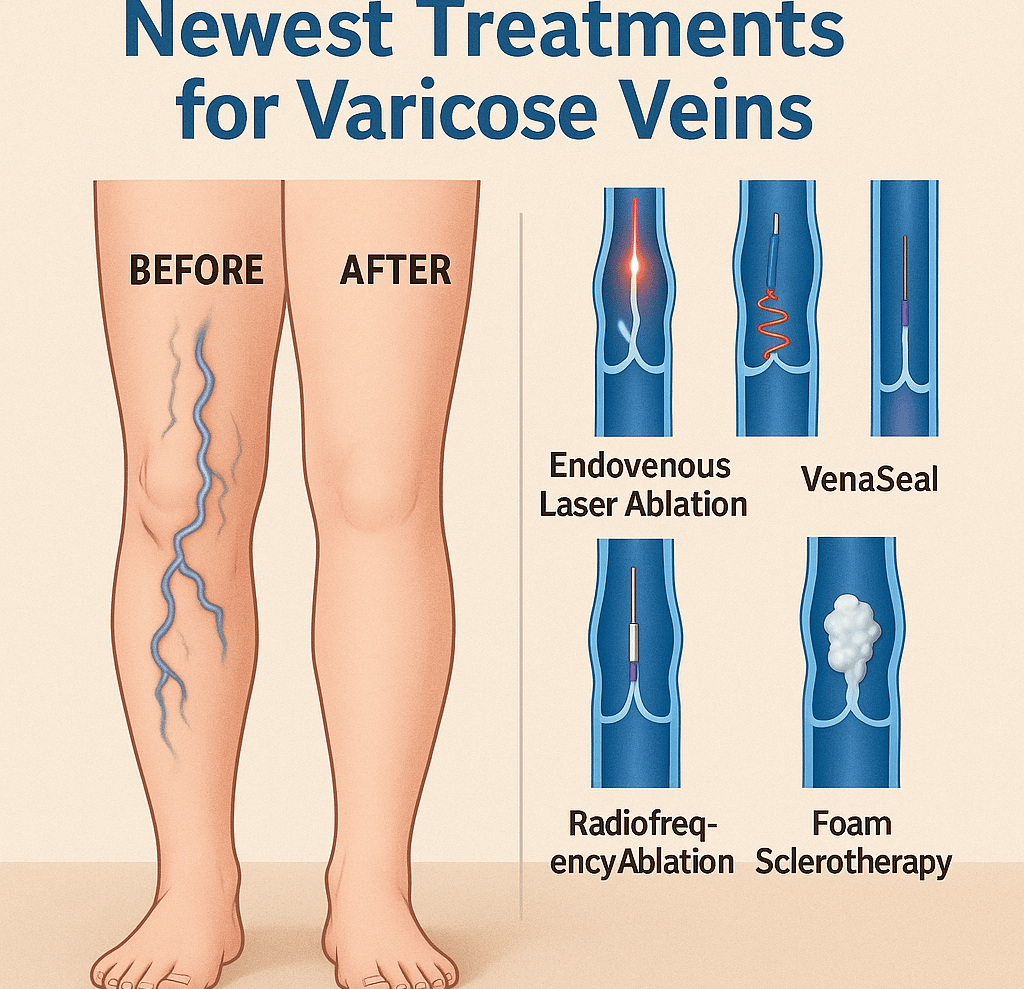Latest Varicose Veins Treatments
Minimally Invasive Options Explained
Dr. Omar Hamdallah
10/18/20252 min read


Understanding the Latest in Varicose Vein Treatments
Varicose veins — those twisted, bulging blue or purple veins — are more than a cosmetic concern. They reflect underlying venous reflux, where blood flows backward due to weak vein valves. Left untreated, they can cause swelling, pain, skin changes, or even ulcers.
Thankfully, modern medicine now offers advanced, minimally invasive treatments that replace painful surgeries with fast, outpatient procedures and excellent cosmetic results.
🌟 The Most Advanced Treatment Options
1️⃣ Endovenous Thermal Ablation (Laser or Radiofrequency)
Uses a thin catheter inserted under ultrasound guidance to heat and seal the diseased vein.
Two main types: Endovenous Laser Ablation (EVLA) and Radiofrequency Ablation (RFA).
Quick recovery — most patients walk out of the clinic within an hour.
Ideal for large veins like the great saphenous vein.
2️⃣ VenaSeal® Medical Adhesive (Vein Glue)
A non-thermal, non-tumescent procedure where a safe medical glue closes the faulty vein.
No heat, no large incisions, and minimal discomfort.
Perfect for patients who prefer to avoid laser or anesthesia.
3️⃣ Ultrasound-Guided Foam Sclerotherapy
A foamy medication is injected into the vein, causing it to collapse and fade over time.
Best for smaller varicose or spider veins.
Quick, simple, and effective — usually done in the doctor’s office.
4️⃣ High-Intensity Focused Ultrasound (HIFU) – The Non-Invasive Future
A completely non-invasive method using focused ultrasound energy from outside the skin to close veins.
No catheters or needles inside the vein.
Still in early adoption, but highly promising.
Source: Harvard Health – Advances in Varicose Vein Treatment
💡 What to Expect Before and After Treatment
Assessment: Your vascular specialist performs a duplex ultrasound to map the affected veins.
Procedure: Done under local anesthesia or none at all.
Recovery: Walk immediately after; resume daily activities the same or next day.
After-Care: Compression stockings for 1–2 weeks and light walking are encouraged.
✅ Patient Checklist
Ultrasound scan before treatment.
Ask your doctor which option (laser, RFA, glue, or foam) fits your case.
Confirm outpatient or hospital setting.
Understand post-procedure instructions.
Discuss long-term success rate and cost.
⭐ Why These Advances Matter
Faster healing & minimal pain
Excellent cosmetic results
Outpatient procedures
Lower recurrence rates
Return to work and activity quickly
© 2024. All rights reserved.
Contact Us
Tel: +96265626538
Email: doctor@jordanvascular
Address: 29 Adib Wahbeh Street
Jordan Hospital Medical Center, Third Floor, Amman, Jordan
Hours:
Saturday to Wednesday: 9 am to 5 pm
Thursday: 9 am to 2 pm
